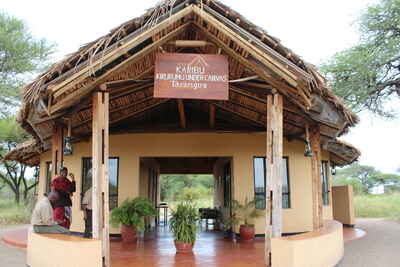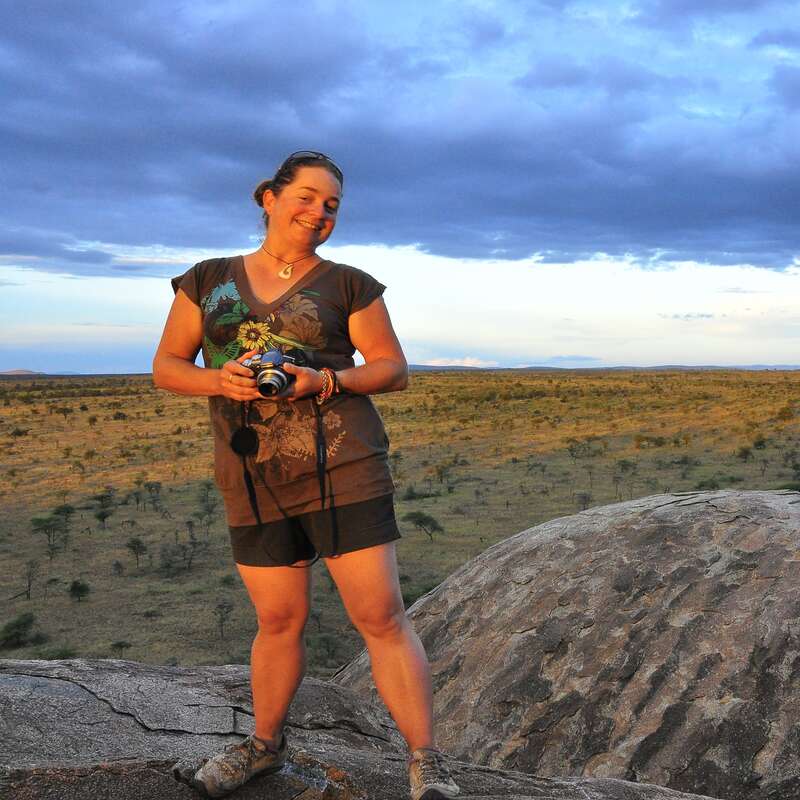About Kirurumu Tarangire Lodge
Kirurumu Tarangire Lodge – opened in 2011 and previously known as Tamarind Camp – is a simple but fairly ...
... comfortable tented camp located by the village of Mswakini, just outside the gates of Tarangire National Park.
Kirurumu Tarangire Lodge works well as a relatively inexpensive base from which to visit the north side of Tarangire National Park, but bear in mind that this is the busiest part of the park – especially during the prime game-viewing months of the dry season.
Accommodation
10 tents
Children
All ages welcome.
Open
All year
Activities

4WD Safari

Birdwatching

Cultural excursion

Guided walking safari

Hot air ballooning

Night drive

Private activities
Traveller reviews of Kirurumu Tarangire Lodge
2 real, un-edited reviews from Expert Africa's travellers.
Arrived 14 Oct 2014, 2 nights
"Tarangire small park but big on game"
Overall rating: Good
Arrived 23 Dec 2013, 2 nights
"Kirurumu Under canvas Tarangire"
Overall rating: Excellent
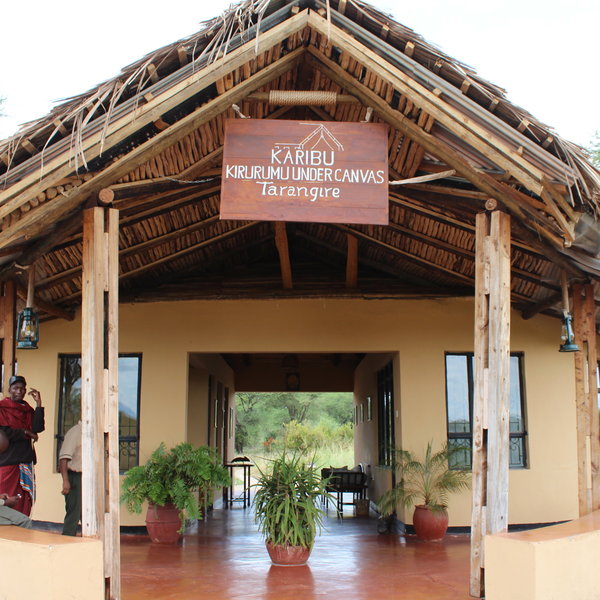
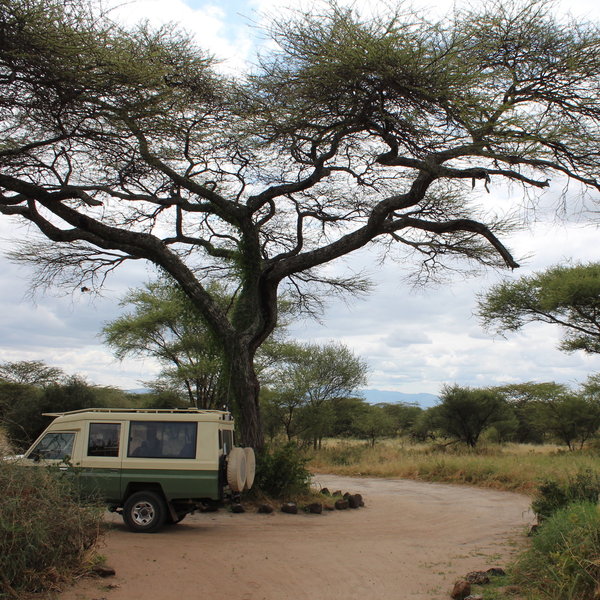
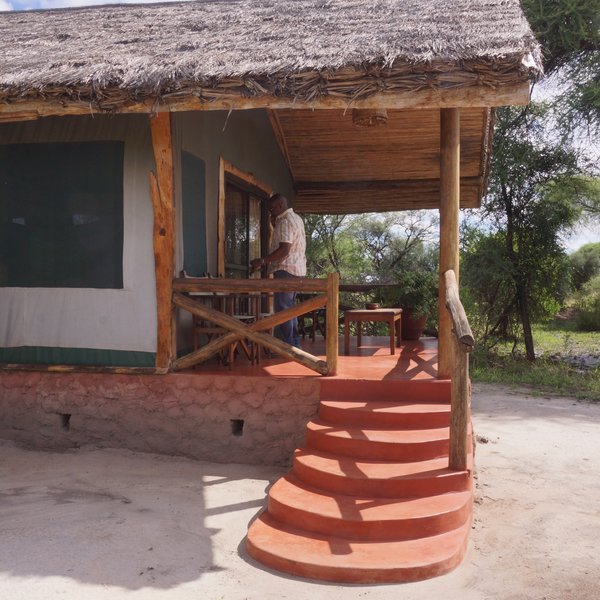
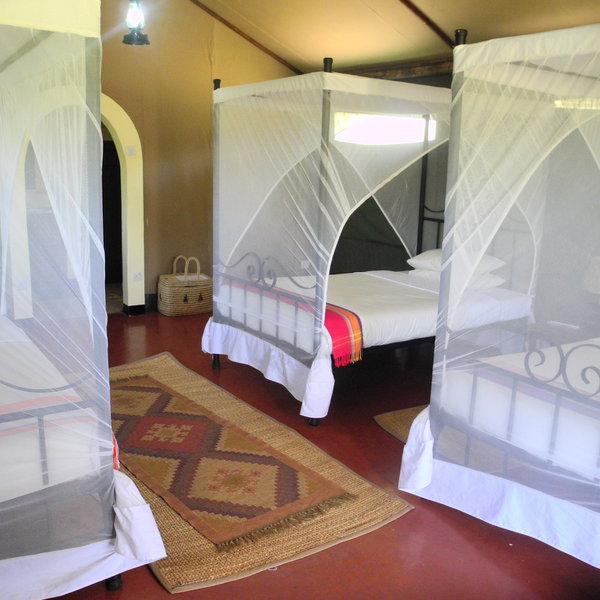
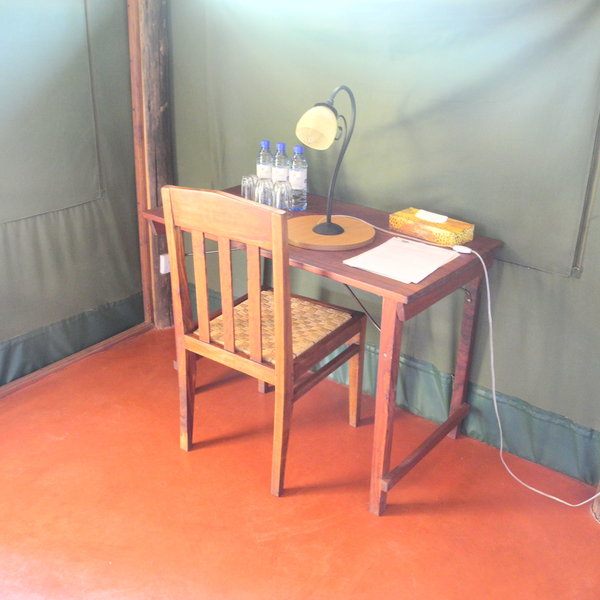
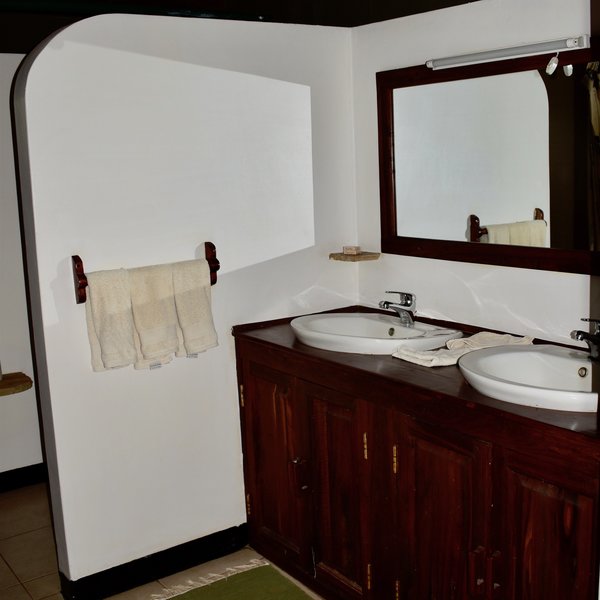
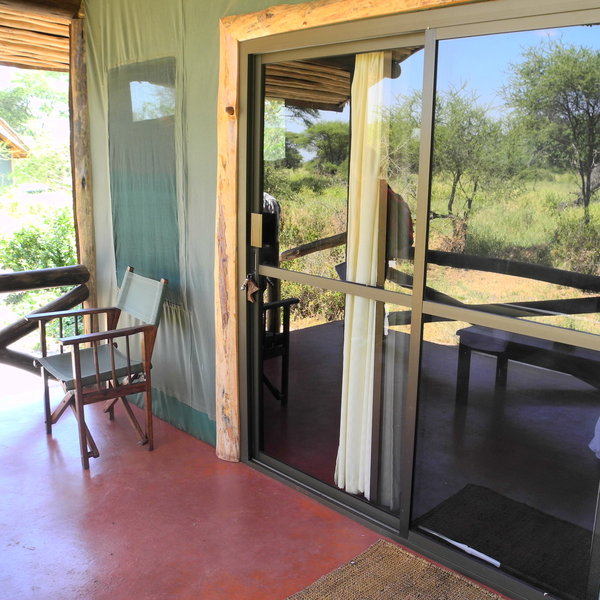
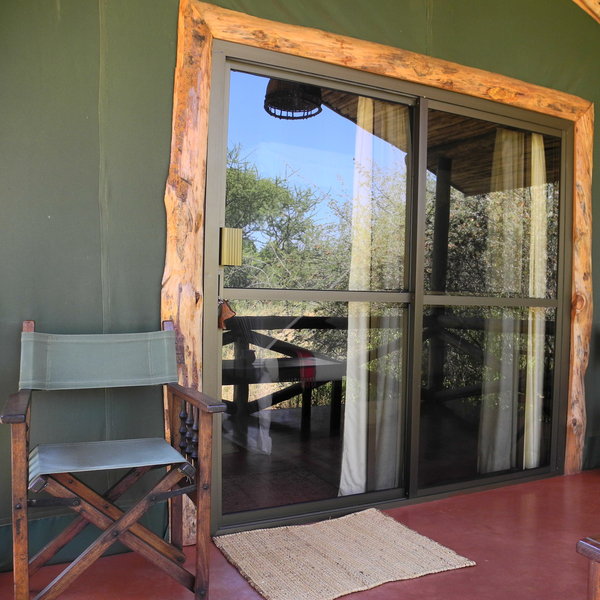
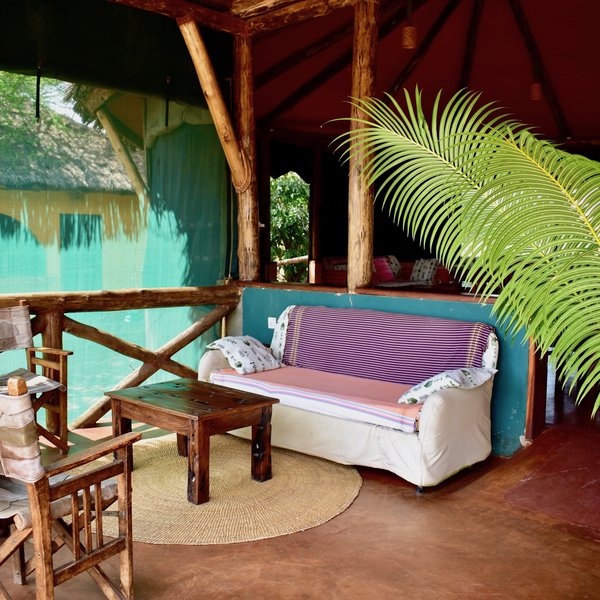
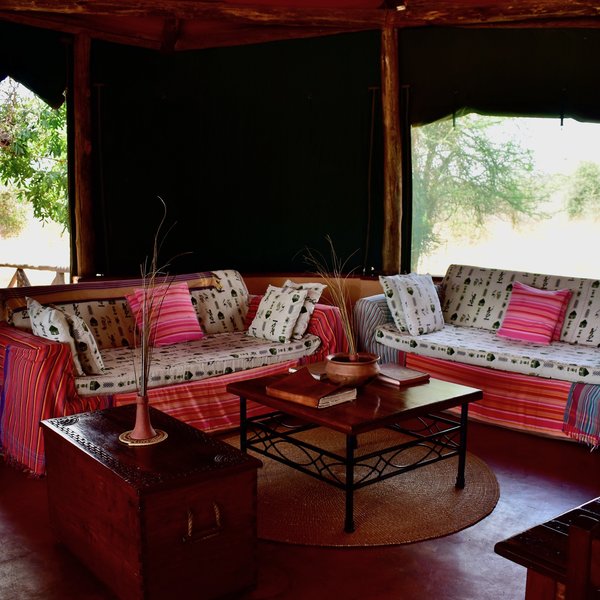
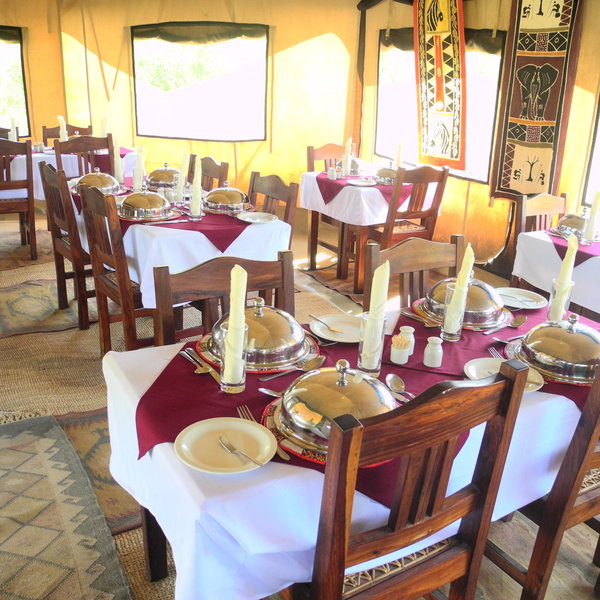
Expert Africa's gallery
When we travel we take lots of photos ourselves to give you a real and un-edited view of the safaris. See our 11 pictures of Kirurumu Tarangire to get the candid view.
View galleryKirurumu Tarangire Lodge: Our full report
Kirurumu Tarangire Lodge – opened in 2011 and previously known as Tamarind Camp – is a simple but fairly ...
... comfortable tented camp located by the village of Mswakini, just outside the gates of Tarangire National Park.
When we last visited, in November 2015, the communal areas of Kirurumu Tarangire had recently been enlarged and updated. The previous dining room, a small open-sided mess tent, could feel quite cramped, but the new dining room is a larger, more permanent, concrete-and-thatch structure raised off the ground, with a lot more space.
Another tent of similar size is used for the lounge and bar. Here you’ll find homely Persian rugs covering the canvas floor, chunky wooden tables and a few sofas – an ideal place to relax, perhaps with one of the books from their small library. Snacks and drinks are served around the campfire in the evening.
The 10 tented rooms at Kirurumu Tarangire are connected by sandy paths through the scrub. They are identical in design: simple and rustic, but perfectly comfortable. There are five on each side of the central areas of the camp, and all of them face Tarangire National Park, across a stretch of seasonal marsh separating the park, 300 metres away, from the camp. The marsh draws wildlife, especially buffalo and elephants through much of the year.
Of the 10 tents, 8 can be set up as doubles or twins, and 2 are usually used as triples, with the option of adding an extra bed to make them quads.
Each tent is set on a stone plinth, with canvas walls and a thatched roof. With their glazed French doors at the front they have quite a permanent feel. Each has a deck at the front, with directors’ chairs. Inside, the tents are spacious, and the red polished floors keep the rooms relatively cool in the heat of the day. There is minimal furniture: steel-framed four-poster bed under mosquito netting, a bedside table, and a small writing desk where you'll find a torch, jugs of filtered drinking water, and insect repellent. Overall, these tented rooms have the quality and style of a mid-range town hotel. You don't choose this camp for its design flair.
The bathroom sits at the back of each tent and although it’s a separate area, there’s no door or partition. It features twin wash basins, a plumbed-in shower and a flush toilet – both of which are curtained off for privacy – and in the two triple rooms, a large lockable cupboard in which to store valuables. The toiletries provided consist of basic bars of soap, and shampoo.
One thing which we found quite unusual was the proximity of Kirurumu Tarangire to the local village well in Mswakini – it’s located less than five minutes’ drive from the lodge entrance and driving past this straight into a lodge with plentiful quantities of running water felt a little uncomfortable. However, the camp is continually improving their relationship with the village: US$15 per person per night is contributed to a fund to help improve Mswakini and village visits, which cost US$20 per group, are also possible.
You can do botanical and livestock boma walks, with camp staff at no formal cost (in other words for the price of a tip), but the camp has no vehicles or driver-guides of its own. Guests staying here always arrive with their own transport and guide.
Activities
4WD Safari
Birdwatching
Cultural excursion
Guided walking safari
Hot air ballooning
Night drive
Private activities
Families & children
- Attitude towards children
- Kirurumu welcomes children of any age.
- Property’s age restrictions
- There are no age restrictions at Kirurumu Tarangire.
- Special activities & services
- There is a short botanical walk and a bird walk around the property, which children can join.
- Equipment
- Kirurumu Tarangire has child-sized chairs and tables for dining, but no high chairs or baby cots.
- Generally recommended for children
- Kirurumu is a wild, unfenced camp and its proximity to the village means that the animals here can be a little more aggressive than usual because the villagers sometimes attack them. Given that there are few special activities or facilities for children, we recommend it only for children over the age of eight.
Food & drink
- Usual board basis
- Full Board
- Food quality
- When we last visited Kirurumu Tarangire we didn’t have a chance to sample the food, but the manager told us guests can expect the following:
Breakfast is a buffet selection of cereals and fruit, and you can also order a cooked breakfast.
Lunch and dinner are both three-course meals with a soup or salad to start. That said, the majority of guests take a packed lunch so they can spend the whole day exploring Tarangire National Park. There is a choice of main courses for dinner with one option always being vegetarian.
Before dinner, guests usually gather around the firepit which looks onto the seasonal marsh. - Dining style
- Individual Tables
- Dining locations
- Indoor and Outdoor Dining
- Further dining info, including room service
- Room service is possible at Kirurumu Tarangire, but there are no phones in the tents so you would need to arrange this in advance.
- Drinks included
- All drinks cost extra. You can expect soft drinks to cost around $2, a beer to cost $4 and a glass of wine to cost $5.
Getting there
- Location
- Tarangire National Park, Tanzania
- Ideal length of stay
- We recommend staying here for two nights while exploring Tarangire National Park.
- Directions
- Tarangire National Park is about 20-40 minutes drive through the wildlife management area. Kirurumu is around 2 hours drive from Arusha.
- Accessible by
- Fly-and-Transfer
Communications
- Communications
- There is a computer in reception that guests can use to access the internet. There is no charge for this, but it uses a modem so can be very slow. There is a limited WiFi hotspot around reception.
- TV & radio
- There is no TV or radio.
- Water supply
- Borehole
- Water supply notes
- Jugs of filtered drinking water are provided in the rooms. Complimentary drinking water provided at dinner.
Health & safety
- Malarial protection recommended
- Yes
- Medical care
- Kirurumu Tarangire has a basic first-aid kit on site, and the manager is first-aid trained. But for serious health problems guests would be driven to Arusha.
- Dangerous animals
- High Risk
- Security measures
- Askaris – mostly Maasai men from the nearby village – patrol the grounds and escort guests to and from their rooms after dark.
- Fire safety
- There are fire extinguishers around the tents, roughly one for every two tents. They do fire-training a couple of times a year.
Useful info
- Disabled access
- Not Possible
- Laundry facilities
- There is a laundry service, which costs a little extra. Clothes are hand-washed and dried in the sun, and ironed when the generator is on.
- Money
- Guests in the triple rooms can lock valuables in the lockable cupboards. Otherwise, you can hand valuables in at reception for safe keeping.
- Accepted payment on location
- Kirurumu Tarangire accepts credit card payments for payments above $50. Expect a 7% surcharge. Payments in cash preferred and recommended. They usually accept British pounds, US dollars, euros and Tanzanian shillings
Plan and book your trip with Expert Africa
All of our trips are tailor-made, so we'll always adapt them to suit you. Talk to an Expert and let us plan and arrange your perfect trip.

Talk to an Expert
Call or email us now! We’ll match you with the Specialist in our team who is best suited to help you. Then together we can start planning your trip.

Set up your itinerary
Based on our experience and your ideas, your specialist will create a detailed, costed itinerary. We’ll refine it together, until we have a trip that you’re perfectly happy with.

Prepare for your trip
The same Specialist will make the seamless arrangements for your trip, send you detailed travel documents, and be available to answer any questions before you depart.

Travel with peace of mind
After you set off, you’ll be cared for by our partners in Africa, most of whom have worked with Expert Africa for decades. And if you ever need us urgently, we’re available 24/7.

When you return
We love to learn about your trip, and so will always be grateful if you’ve the time to give feedback to your Specialist when you return.
Kirurumu Tarangire Lodge's location
Look closer at the environment and surroundings of Kirurumu Tarangire.
Excursions from Kirurumu Tarangire
Optional extra day-trips and excursions possible whilst you're staying at Kirurumu Tarangire. Talk to us: these are usually best arranged before you go.
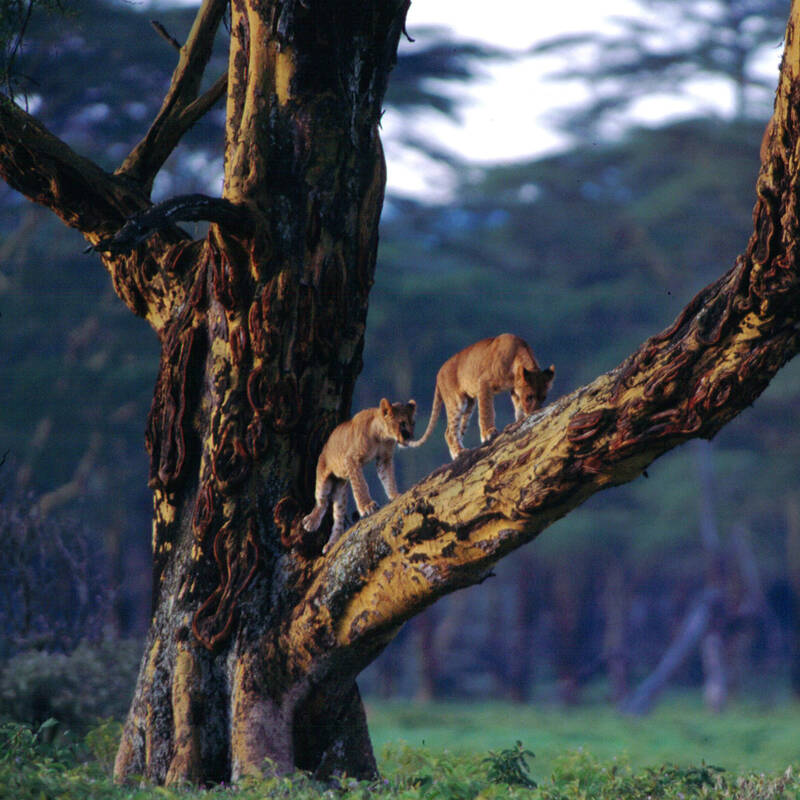
Lake Manyara Safari
Half-day or full-day
Set against the spectacular backdrop of the Rift Valley escarpment, Lake Manyara National Park makes a great safari destination. Here, along with elephant herds and plains game, you’ll find jungle-like forests that are home to blue monkeys, a soda lake tinged pink by flamingos and some of Tanzania’s best birding.
More about Lake Manyara Safari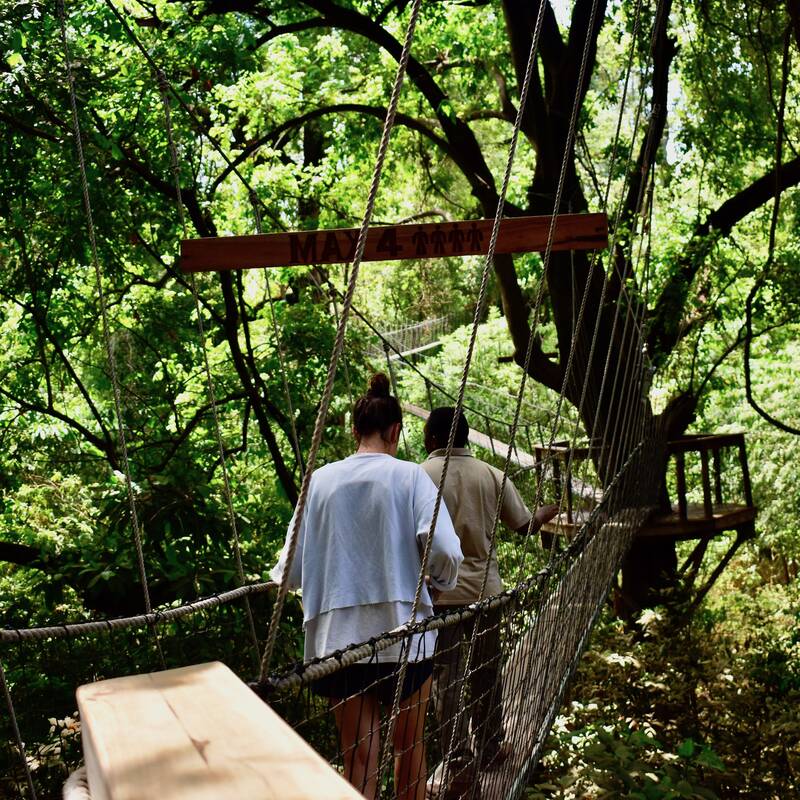
Lake Manyara Treetop Walkway
Usually one hour
Experience the forest of Lake Manyara National Park from a whole new perspective – high up in the trees. The first suspended walkway in Tanzania, it stretches underneath the canopy for 370m between the mahogany and fig trees, giving intrepid visitors a unique view of the surrounding flora and fauna.
More about Manyara Treetop WalkOther lodges in Tarangire National Park
Alternative places to stay in this same area.
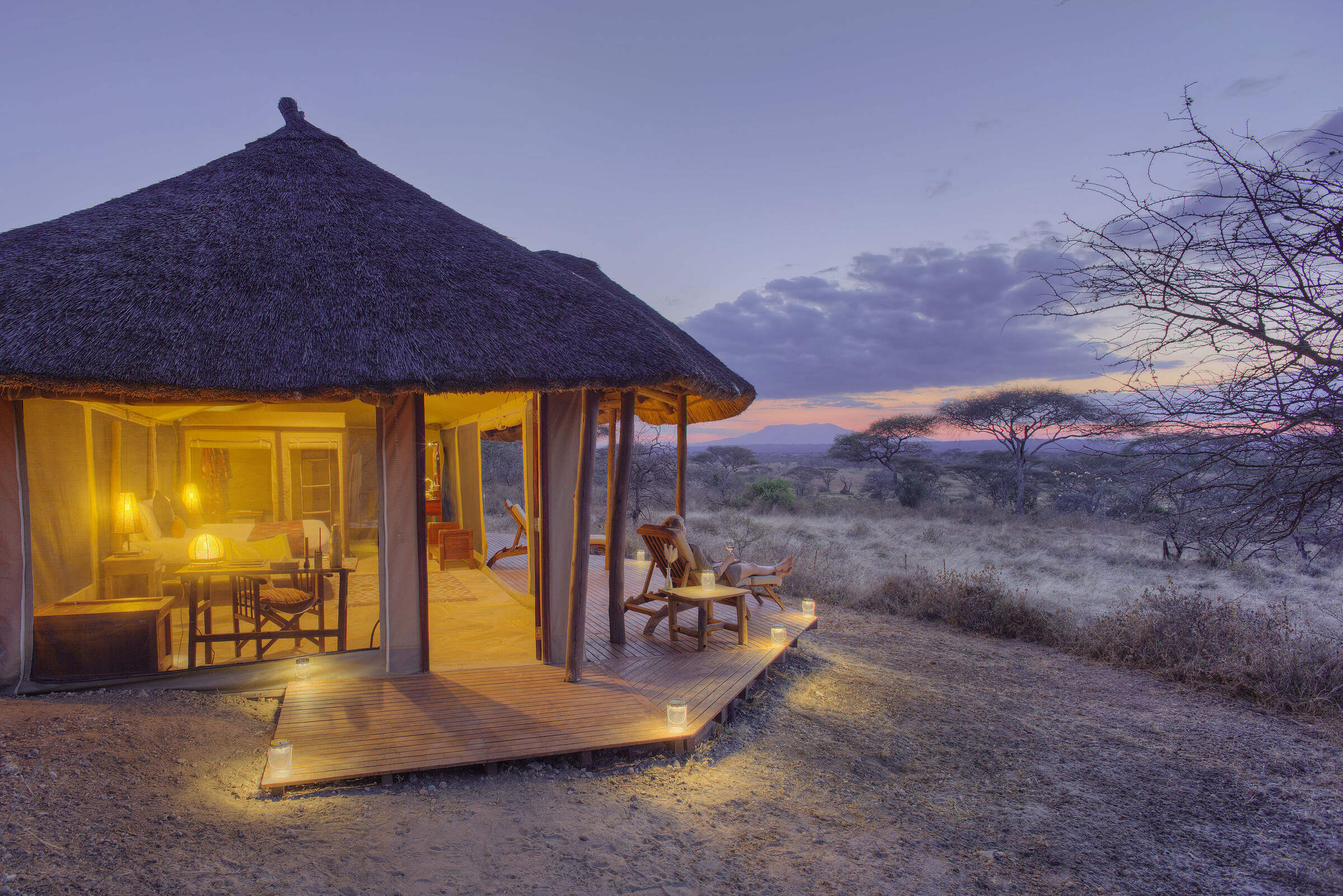
Oliver's Camp
Oliver's Camp is a small, intimate, luxury tented camp in a great location in northern Tanzania's Tarangire National Park.
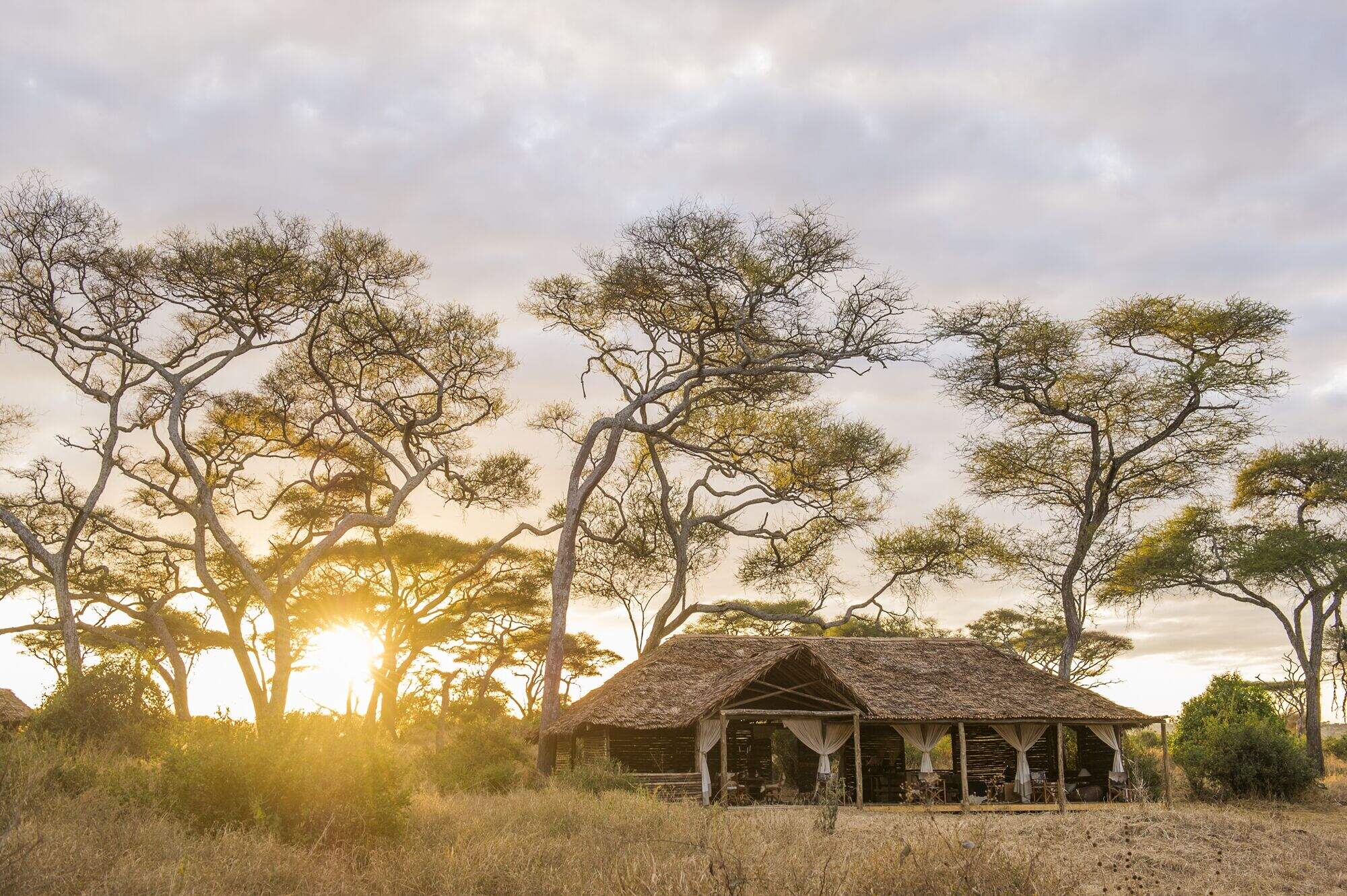
Kuro Tarangire
Kuro Tarangire is a stylish tented camp, located in a quiet and remote area deep in Tarangire National Park.
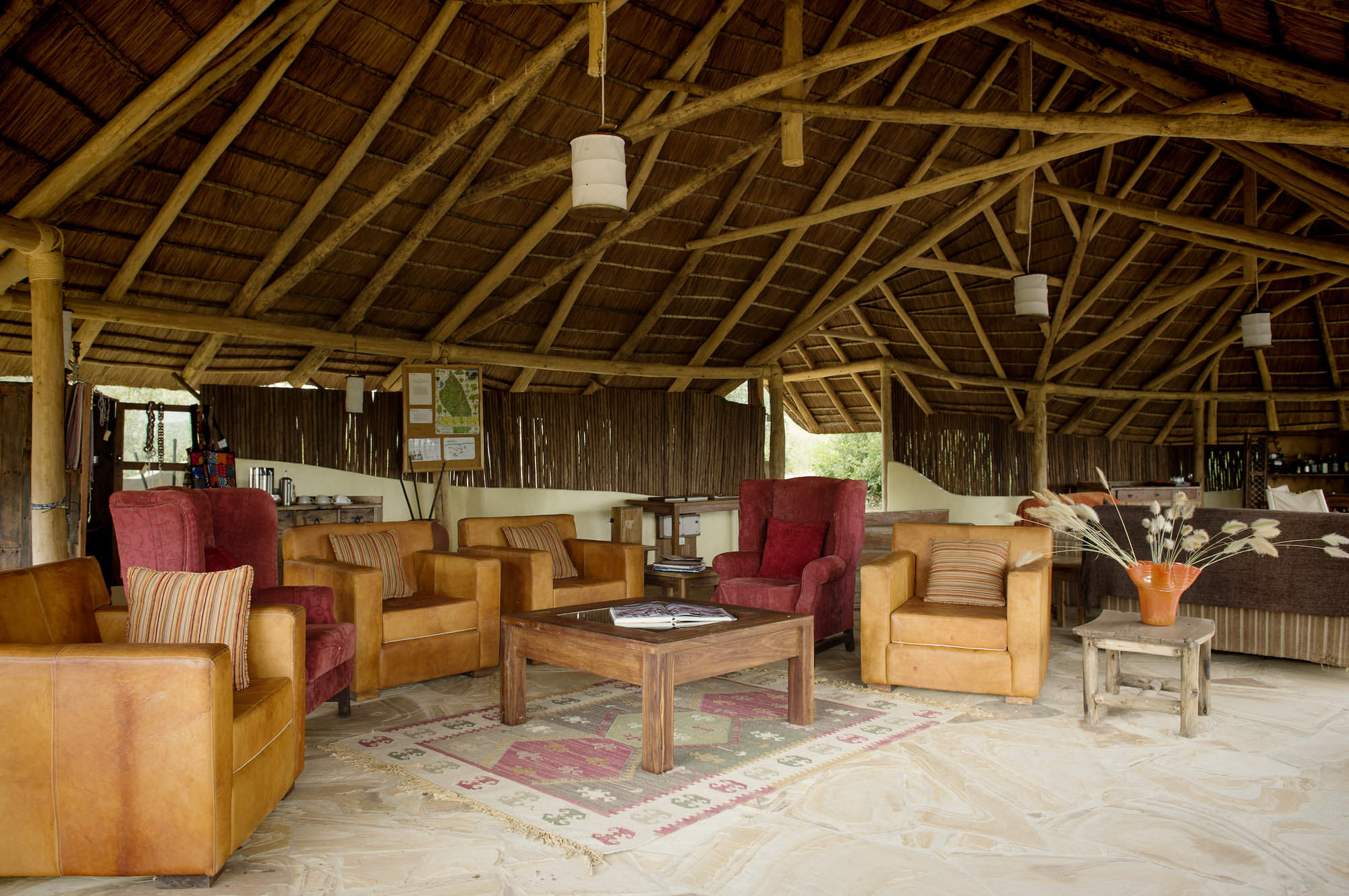
Little Oliver's
For a more private version of its sister property, Oliver’s Camp, Little Oliver’s offers high-quality guiding and tented rooms.
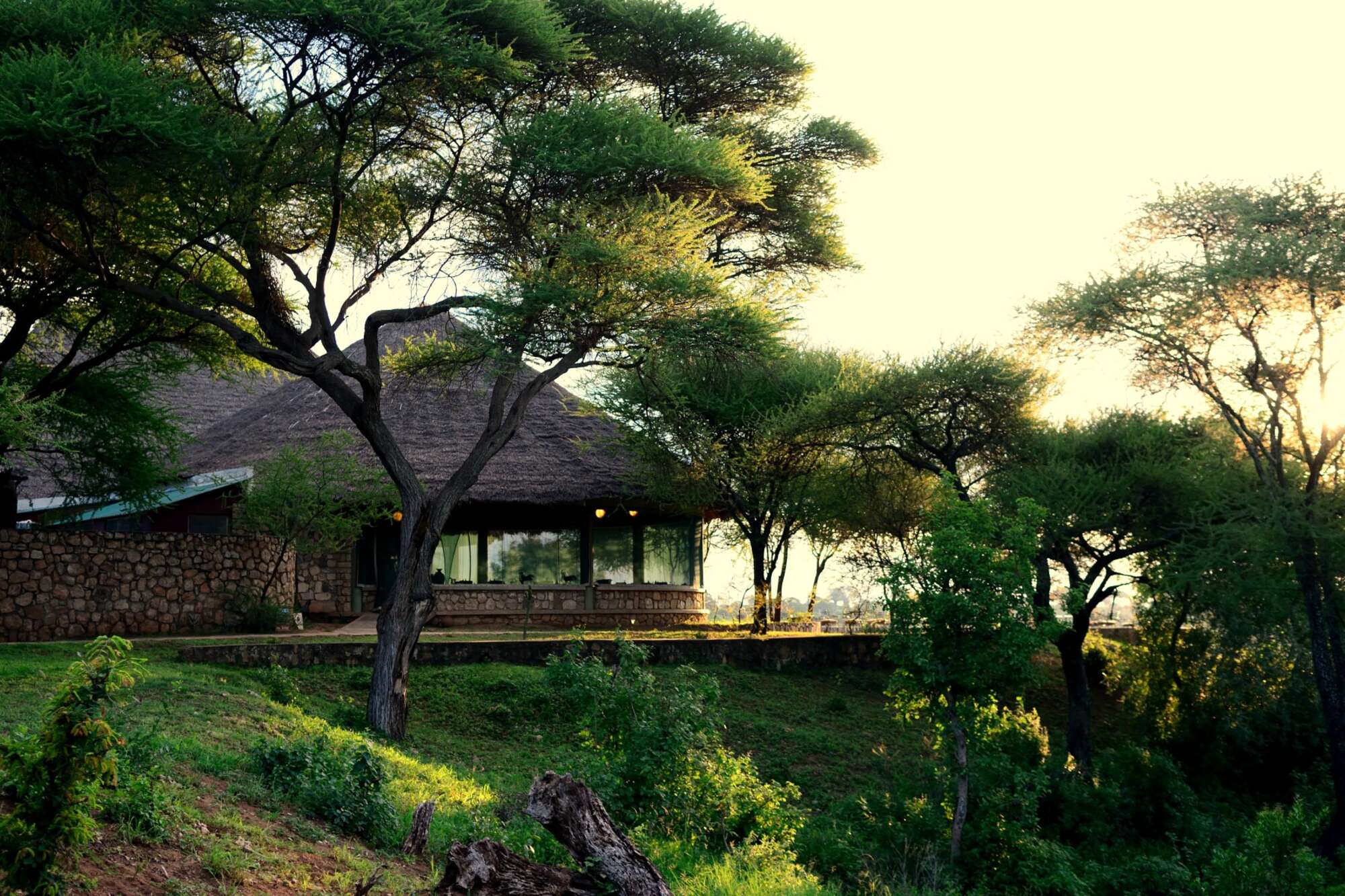
Tarangire Safari
Functional Tarangire Safari Lodge is one of Tarangire National Park's larger lodges, on a prime central site overlooking the river.
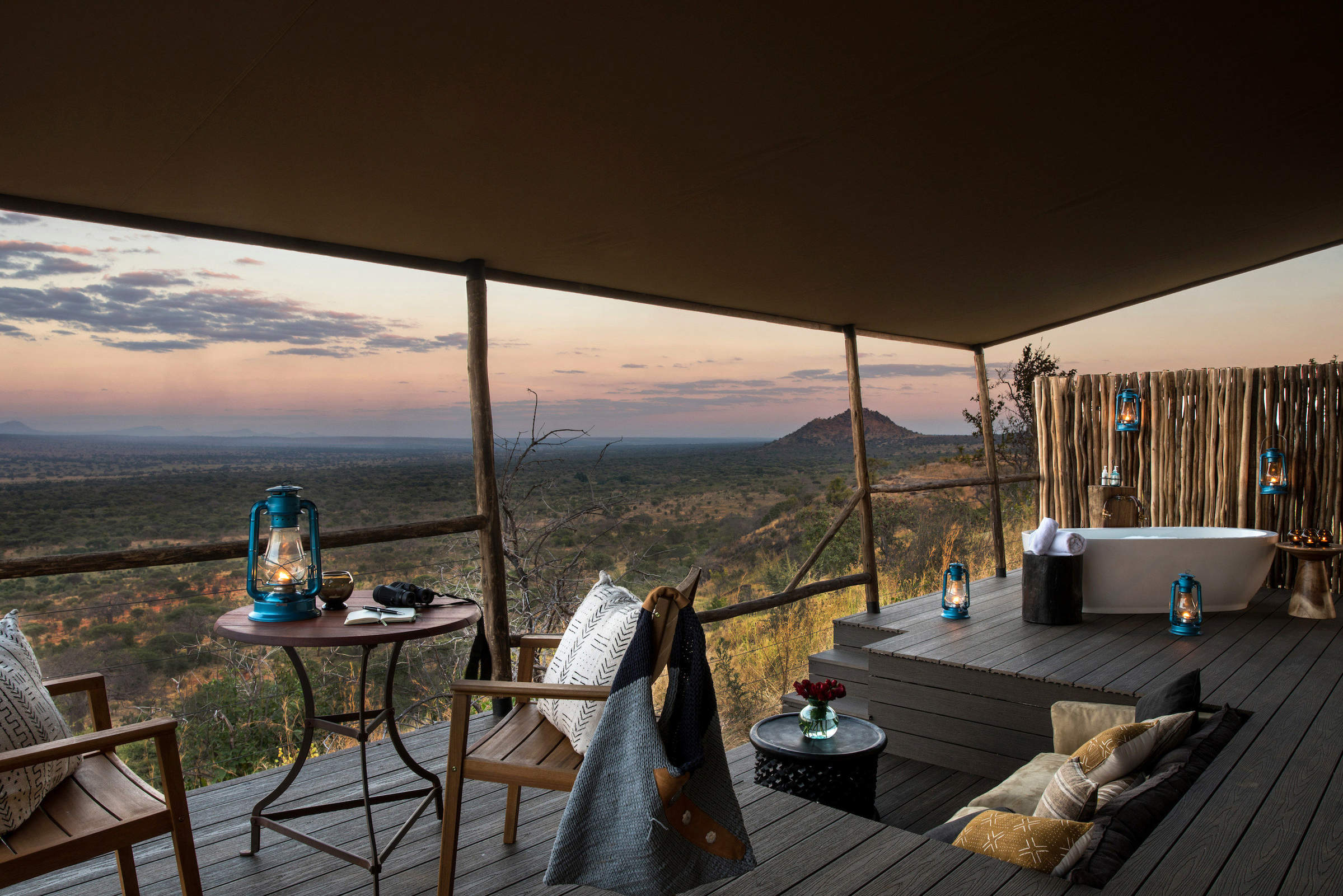
Lemala Mpingo Ridge
Lemala Mpingo Ridge is a stylish camp in Tarangire National Park, with a beautiful location and elevated views over the park.
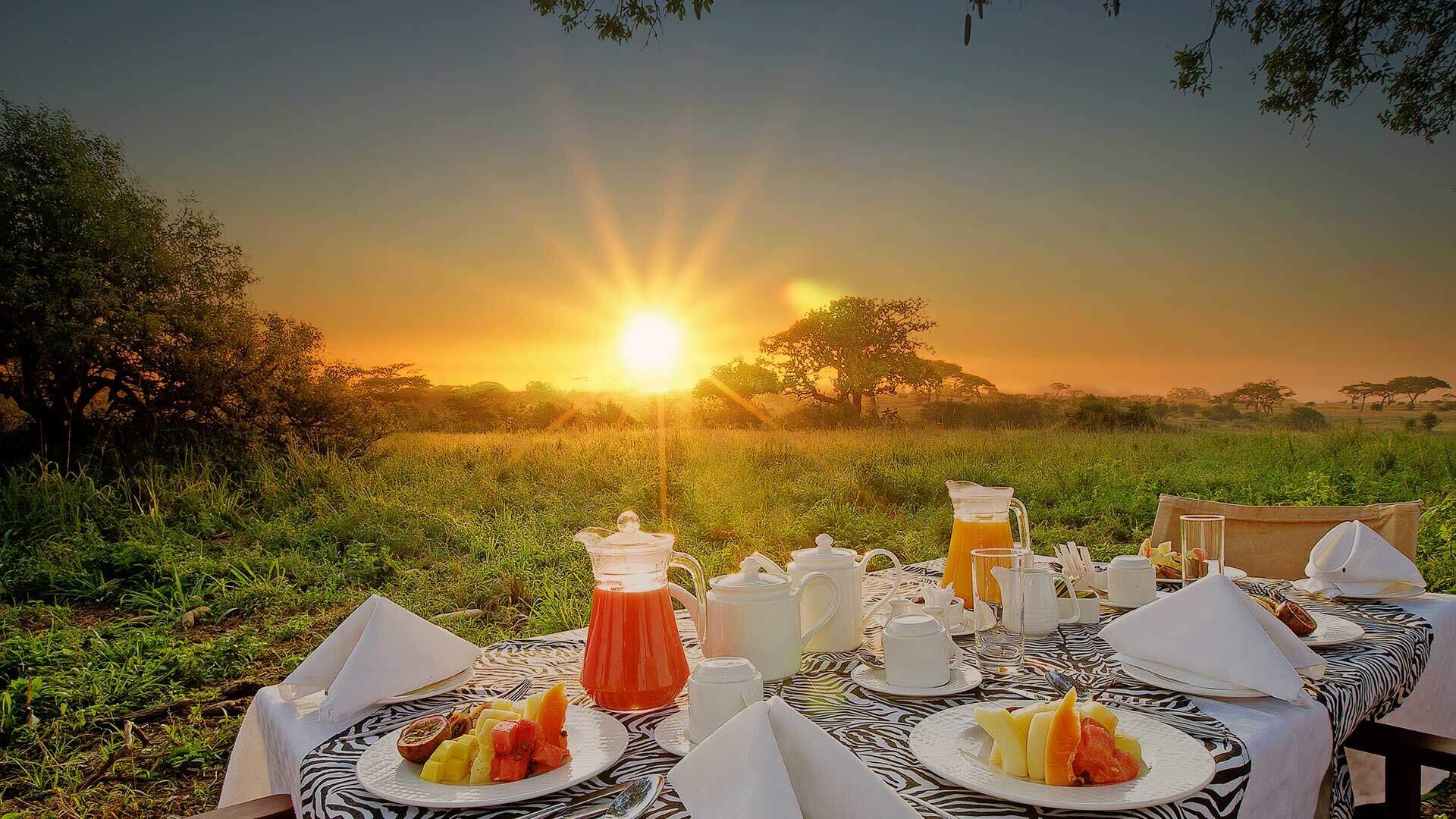
Tarangire Sopa Lodge
Tarangire Sopa Lodge is a large, comfortable, family-friendly hotel in Tarangire National Park, suitable for travellers on a budget.
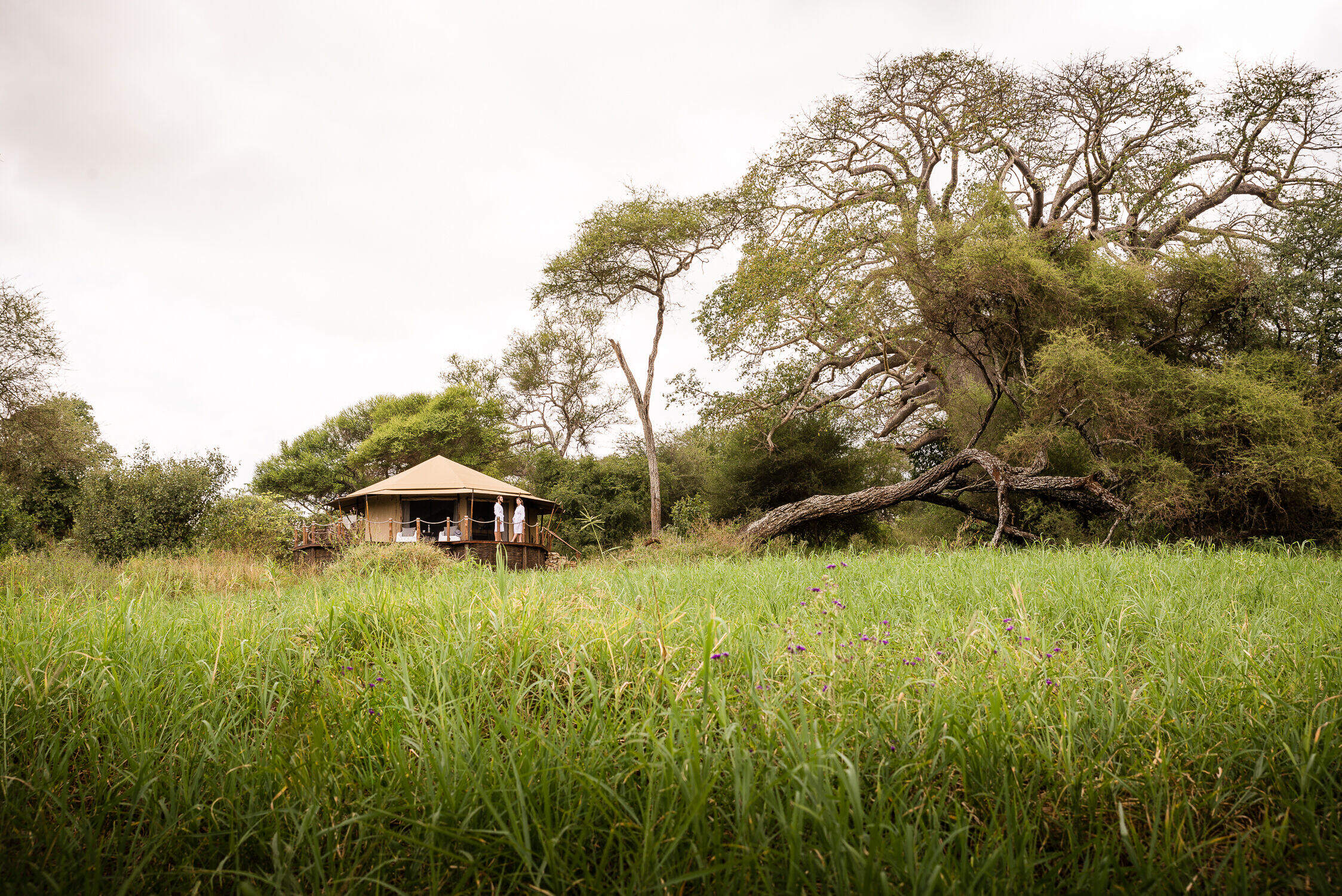
Swala Camp
Swala Camp is a stylish camp for exploring the southern Tarangire, either with a private driver-guide, or using the camp's vehicles and guides.

Tarangire Treetops
Tarangire Treetops is a lovely, high-quality lodge on the outskirts of Tarangire National Park, offering game drives, night drives and safari walks.
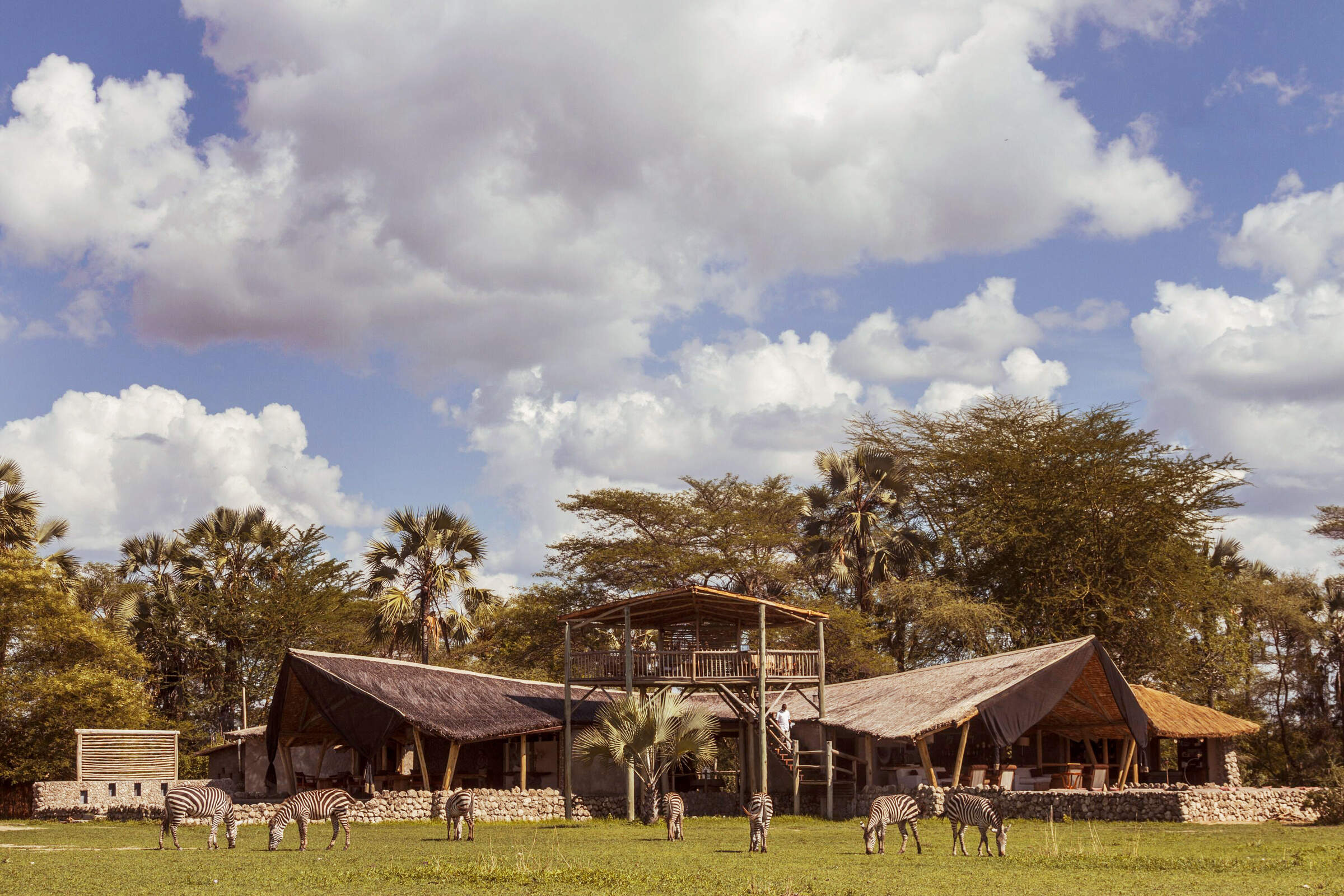
Chem Chem
Chem Chem is a luxury tented lodge on a private concession between Lake Manyara and Tarangire national parks.
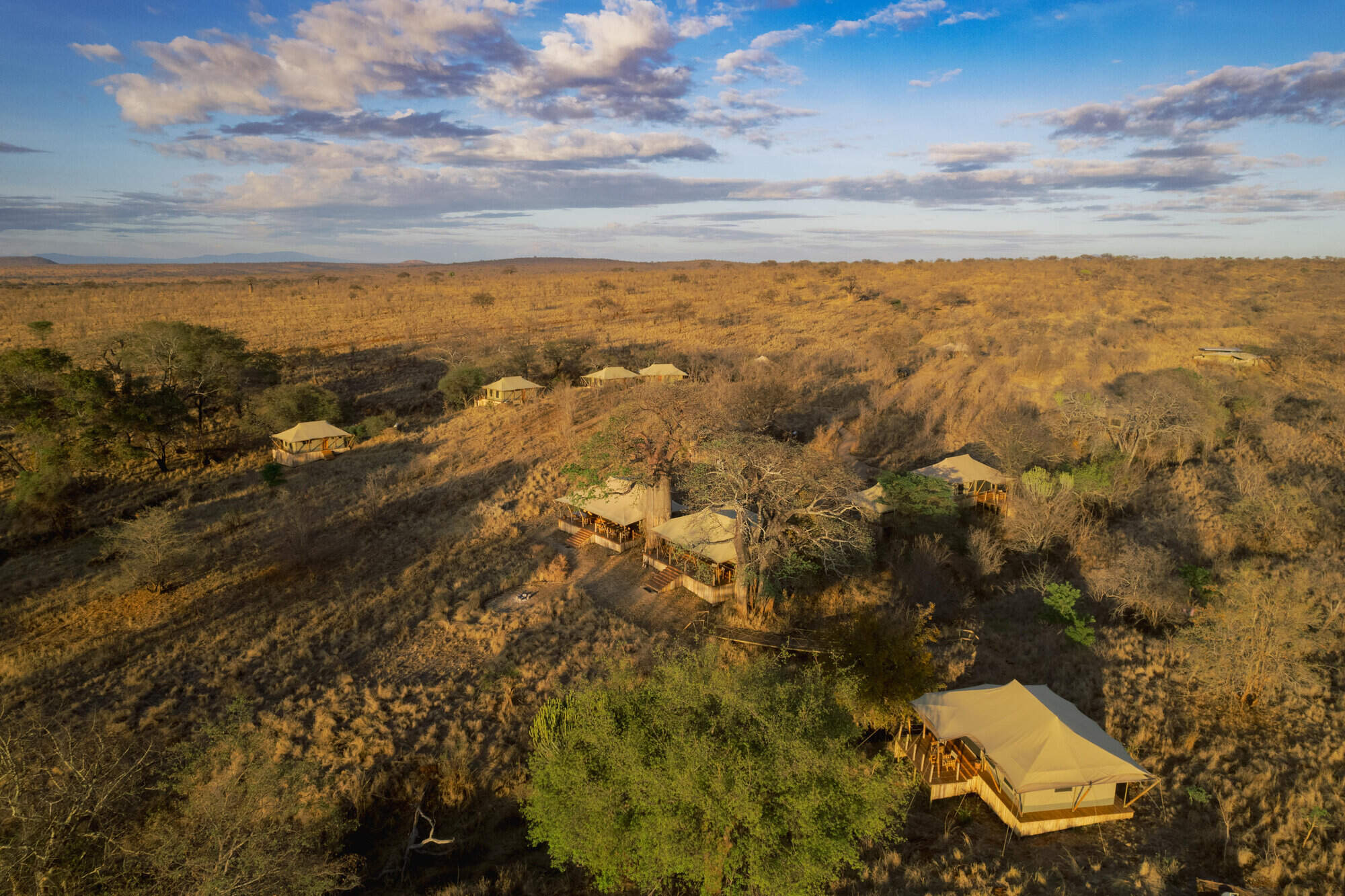
Olkeri Camp
Olkeri is a comfortable tented camp, located in the Randilen Wildlife Management area, bordering Tarangire National Park; ideal for those looking for pristine wilderness.
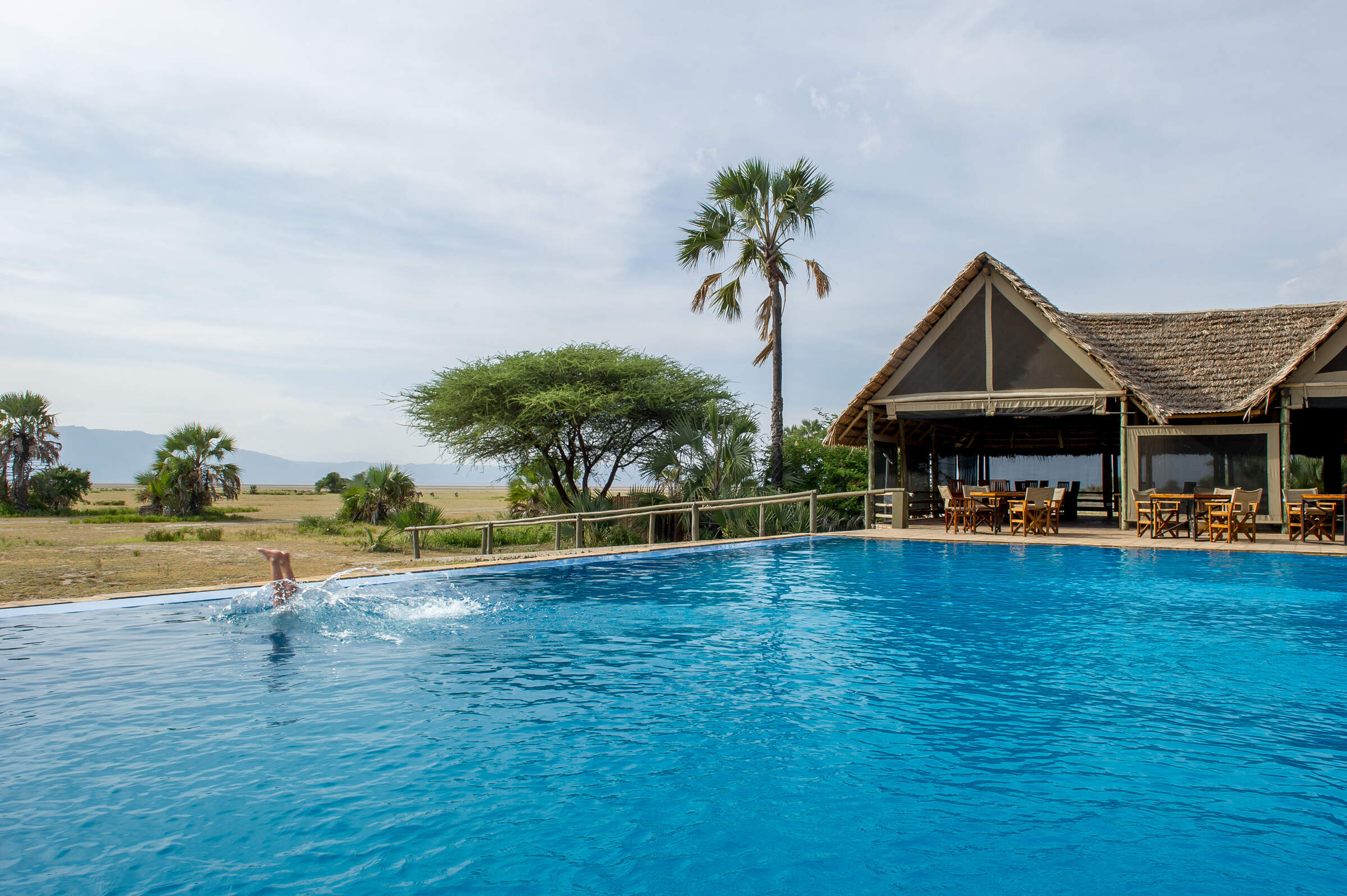
Maramboi Tented Camp
Maramboi Tented Camp is a family-friendly tented lodge located between Lake Manyara and Tarangire National Park.
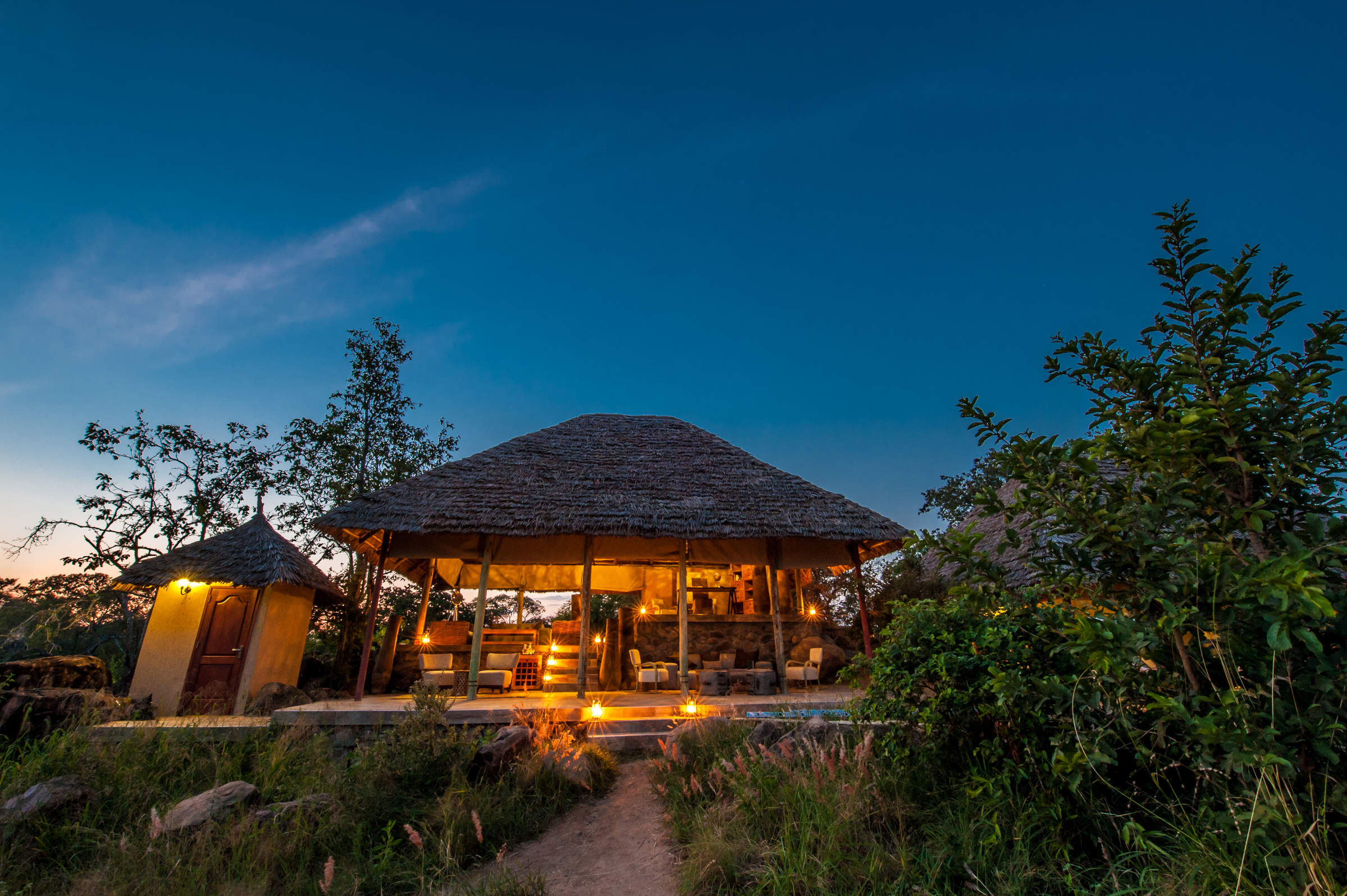
Nimali Tarangire
Nimali is a small camp built in contemporary style on the outskirts of Tarangire National Park in northern Tanzania.
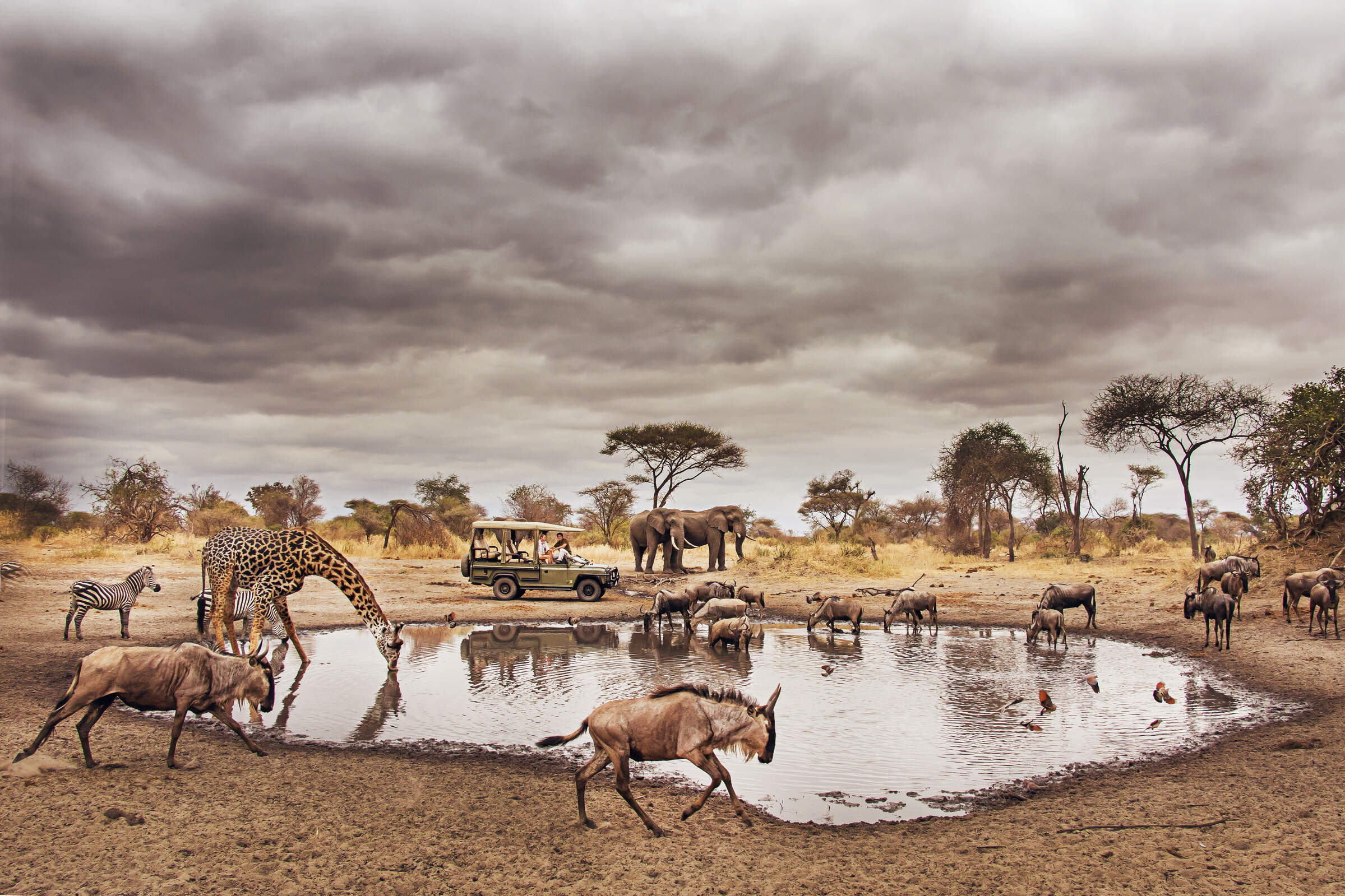
Forest Chem Chem
Located in the Chem Chem Concession and close to Tarangire National Park, Forest Chem Chem is a high-quality tented camp which is booked on an exclusive basis.
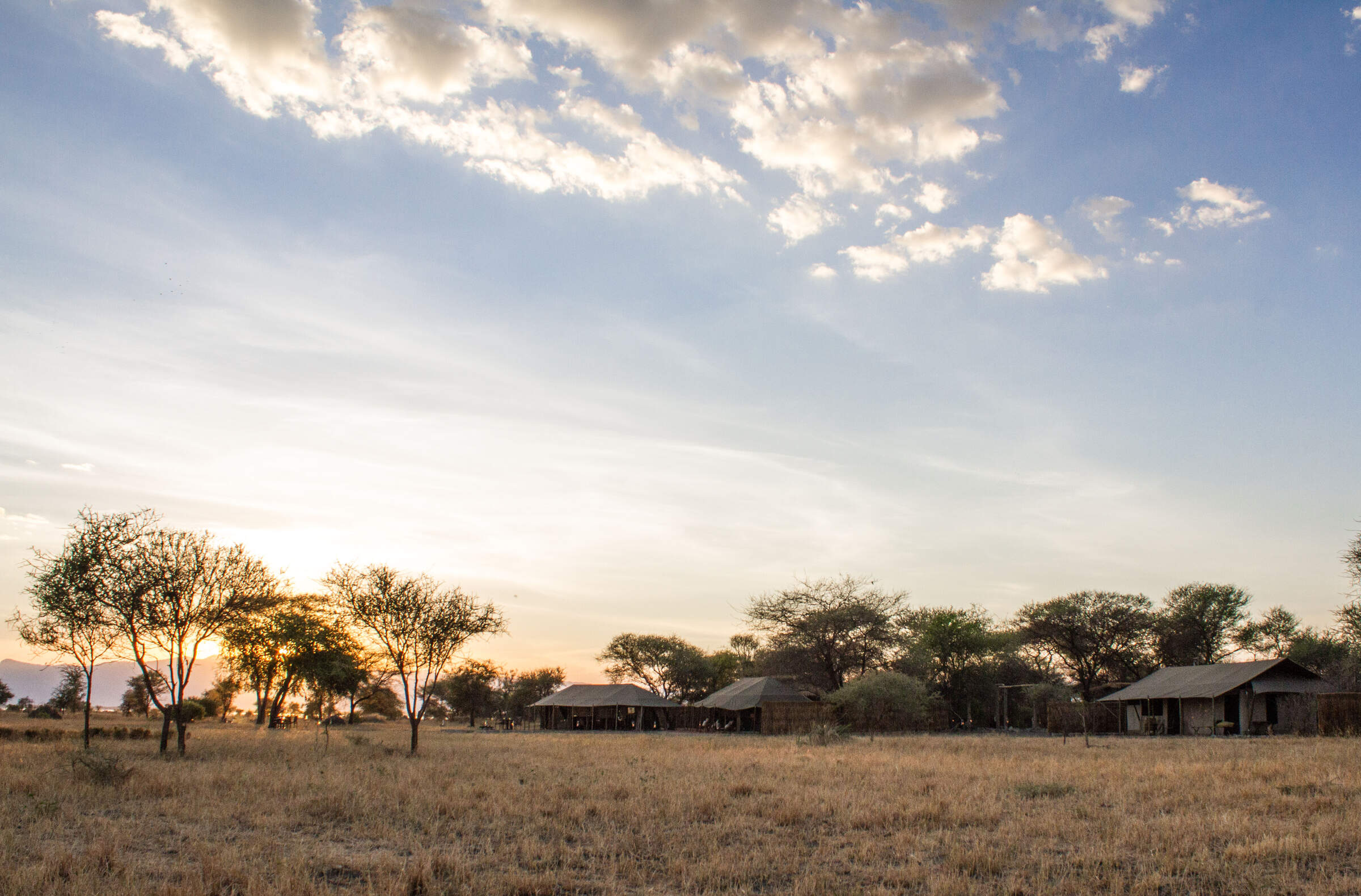
Little Chem Chem
Little Chem Chem is a stylish option near Tarangire National Park, offering real relaxation combined with a variety of safari activities.
When to go to Tarangire National Park
Our month by month guide: What it's like to visit Kirurumu Tarangire in Tarangire National Park
Jan
Feb
Mar
Apr
May
Jun
Jul
Aug
Sep
Oct
Nov
Dec
Tarangire National Park in January
January marks the start of the short dry season. The Tarangire River becomes a crucial water source, attracting diverse wildlife. Elephants, buffaloes, and zebras congregate around the river and swamps. The iconic baobab trees stand out against the landscape, providing food and shelter for animals. Birdwatching is excellent as resident birds display breeding plumage and migrant species are present.
The Silale and Gurusi swamps teem with hippos and crocodiles. While the southern areas of the park may still be wet, the northern regions offer great game viewing. The Matete Woodlands provide opportunities to spot leopards and rare fringe-eared oryx antelopes. January can offer great value for visitors, with quieter park conditions and variable weather.
- Variable weather, dry or rainy periods
- Good for birding, many migrant species present
- Elephant herds gather near Tarangire River
- Lush landscapes ideal for photography
- Quieter after early January rush
Our view
A good time to visit, with pros & cons
Weather in January
Tarangire National Park in February
February in Tarangire National Park is one of the hottest months, with temperatures reaching around 33°C/91°F. The short dry season continues, making it an excellent time for wildlife viewing. The Tarangire River and surrounding swamps become focal points for animal activity. Large herds of elephants, numbering over 3,000, are a major attraction.
The north offers impressive vegetation and birdlife, including large flocks of red-billed quelea birds and various raptors. Birdwatchers will enjoy the park's 550+ species, with northern hemisphere migrants joining resident birds. February is lovely for ballooning, offering unique aerial views of the park's diverse landscapes and wildlife during the cooler morning hours.
- Hot and dry weather prevails
- Large elephant herds visible near water sources
- Excellent time for game drives and safaris
- Baobab trees stand out in dry landscape
- Park less crowded, better wildlife viewing
Our view
A very good time to visit
Weather in February
Tarangire National Park in March
As March arrives in Tarangire, the long rains begin, transforming the landscape. This is an important time for the park's famous baobab trees, which store water in their trunks. While game viewing becomes more challenging due to dispersing wildlife, it's an excellent time for photography as the scenery turns lush and green.
The Tarangire ecosystem, including granitic ridges and river valleys, offers stunning views of the Great Rift Valley. Birdwatching remains rewarding, especially in the swampy floodplains and woodlands. March remains challenging for guided walking safaris, as the vegetation is high and thick.
- Hot with increasing humidity before rains
- Wildlife viewing varies as rains approach
- Quiet park with lower visitor numbers
- Migratory birds still present in good numbers
- Balloon safaris offer stunning aerial views
Our view
A good time to visit, with pros & cons
Weather in March
Tarangire National Park in April
April is the wettest month in Tarangire, with an average of 250mm of rain. The park's landscape is at its lushest, with flowering plants attracting insects and smaller animals. While big game viewing is more challenging due to dense vegetation, it's an excellent time for photographers to capture the vibrant scenery. The Tarangire River and swamps swell, creating picturesque scenes.
Birdwatching remains exceptional, with over 550 species present in the park. Visitor numbers are low, providing a more intimate safari experience.
- Heavy rains with impressive thunderstorms
- Some camps closed due to weather conditions
- Lowest rates and very few other tourists
- Lush green landscape, but wildlife dispersed
- Birdwatching excellent for resident species
Our view
This is not a great time to visit
Weather in April
Tarangire National Park in May
As May progresses in Tarangire, the long rains begin to taper off. The park's diverse habitats, from woodlands to savannahs, are lush and green. While wildlife viewing can still be challenging due to high grass, patient observers may spot leopards in the Matete Woodlands. The swamps, including Silale and Gurusi, are full of water, attracting numerous bird species.
May is an excellent time for photography, with dramatic skies and verdant landscapes. The Tarangire ecosystem is at its most vibrant, showcasing the park's stunning biodiversity. Visitor numbers remain low, offering peaceful game drives. Cultural visits to nearby Maasai communities provide insights into local traditions and lifestyles.
- Rains continue, creating dramatic skies
- Quiet time to visit, avoiding crowds
- Park lush and green with high grass
- Wildlife more dispersed, fewer sightings
- Affordable rates for budget-conscious visitors
Our view
This is not a great time to visit
Weather in May
Tarangire National Park in June
June marks the beginning of the dry season in Tarangire. As the landscape starts to dry, wildlife begins to congregate around permanent water sources. The famous Tarangire River becomes a hub of animal activity, attracting diverse species. Elephant herds become more visible as they move towards reliable water supplies.
June is an excellent time for birdwatching, with over 550 species present in the park. The Lemiyon Triangle in the north offers impressive vegetation and birdlife. As the grass starts to shorten, game viewing improves, especially along the Birungi Circuit. June is lovely for balloon safaris, providing breathtaking views of the awakening landscape and wildlife below.
- Weather transitions from wet to dry
- Wildlife starts concentrating near water
- Park still green with some high grasses
- Visitor numbers increasing gradually
- Good value with shoulder season prices
Our view
A good time to visit, with pros & cons
Weather in June
Tarangire National Park in July
July is a prime month for wildlife viewing in Tarangire. As the dry season progresses, large herds of elephants, buffaloes and zebras gather around the Tarangire River and swamps. The park's famous baobab trees stand out against the increasingly arid landscape. Game drives along the Birungi Circuit offer excellent opportunities to spot lesser kudu and massive elands.
Birdwatching remains rewarding, especially around the park's swamps and woodlands. The Matete Woodlands provide good chances to see leopards and rare fringe-eared oryx antelopes. July is perfect for photography, with clear skies and animals congregating at water sources. Guided nature walks provide intimate encounters with the park's flora and fauna. Sundowner game drives offer magical experiences as the African sun sets over the savannah.
- Dry season begins, excellent wildlife viewing
- Large elephant herds visible near river
- Popular time with higher visitor numbers
- Peak prices due to optimal conditions
- Guided walks offer intimate wildlife experiences
Our view
Fantastic: the very best time to visit
Weather in July
Tarangire National Park in August
August in Tarangire offers exceptional wildlife viewing opportunities. The dry season is in full swing, concentrating animals around the Tarangire River and remaining water sources. Large elephant herds, sometimes numbering in the hundreds, are a common sight. The park's swamps, including Silale and Gurusi, attract diverse wildlife.
Birdwatching is excellent, with many species gathering around water bodies. The iconic baobab trees provide a striking backdrop for photography. August is ideal for balloon safaris, offering panoramic views of the park's diverse landscapes and wildlife. Guided nature walks provide intimate encounters with the park's flora and fauna. Cultural visits to nearby Maasai communities offer insights into traditional lifestyles.
- Dry conditions, animals gather at water sources
- Excellent general wildlife viewing
- Busy season with higher visitor numbers
- Swamps attract diverse wildlife species
- Night drives reveal nocturnal animals
Our view
Fantastic: the very best time to visit
Weather in August
Tarangire National Park in September
September is an excellent month to visit Tarangire. As the dry season peaks, wildlife concentrates around remaining water sources, particularly the Tarangire River. Large herds of elephants, wildebeests, and zebras offer spectacular viewing opportunities. The Matete Woodlands and Birungi Circuit provide chances to spot predators like leopards. Birdwatching remains rewarding, with over 550 species in the park.
The landscape, dotted with iconic baobab trees, offers stunning photographic opportunities. September is ideal for guided walking safaris, allowing visitors to explore the park's ecosystem up close. Balloon safaris provide breathtaking aerial views of the parched landscape and congregating wildlife.
- Fantastic wildlife viewing opportunities
- Parks becoming very dry, animals congregate
- Slightly quieter than peak August period
- Baobab trees in full leaf, great for photos
- Higher chances of seeing large predators
Our view
Fantastic: the very best time to visit
Weather in September
Tarangire National Park in October
October in Tarangire marks the end of the dry season, offering some of the best wildlife viewing opportunities. The Tarangire River and surrounding swamps become crucial for survival, attracting large concentrations of animals. Elephant herds are particularly impressive during this time. The park's famous baobab trees stand out against the parched landscape. Birdwatching is excellent, with many species congregating around remaining water sources.
October is ideal for photography, with clear skies and abundant wildlife. Balloon safaris provide stunning aerial views of the park's varied landscapes and wildlife. As the month progresses, there's a chance of early rains, bringing new life to the park.
- Mostly dry with comfortable temperatures
- Excellent game viewing around water sources
- Lower visitor numbers than earlier months
- Balloon safaris offer breathtaking views
Our view
A very good time to visit
Weather in October
Tarangire National Park in November
November in Tarangire sees the start of the short rains, transforming the landscape. The famous baobab trees begin to flower, creating a lush backdrop. Wildlife starts to disperse as water becomes more widely available, but game viewing remains good. The Tarangire River and swamps continue to attract diverse species. November is excellent for birdwatching as migratory birds arrive, joining the park's 550+ resident species.
As the vegetation greens, photography opportunities abound. Guided nature walks provide insights into the park's changing ecosystem. Cultural visits to nearby Maasai communities offer unique experiences. November can offer great value with shoulder season rates and fewer visitors.
- Variable weather, chance of rain increasing
- Parks quieter, prices more affordable
- Wildlife disperses as rains begin
- Migratory birds start arriving in the park
- Green season begins, landscape transforms
Our view
A good time to visit, with pros & cons
Weather in November
Tarangire National Park in December
December in Tarangire brings a mix of wet and dry conditions. The short rains continue, rejuvenating the landscape. The famous baobab trees are in full leaf, providing shade and food for wildlife. While animals are more dispersed than in the dry season, game viewing remains rewarding. The Tarangire River and swamps continue to attract diverse species.
December is excellent for birdwatching, with migratory birds present alongside resident species. Balloon safaris provide stunning views of the greening landscape. Cultural visits to nearby communities offer insights into local holiday traditions. Despite being a popular time for visitors, especially during the festive season, December can still offer peaceful safari experiences in less-visited areas of the park.
- Variable weather, mix of dry and rainy days
- Good game viewing in Tarangire River area
- Quiet early month, busy during holidays
- Prices vary from low to peak holiday rates
- Lush landscapes after early rains
Our view
A good time to visit, with pros & cons
Weather in December

Looking for inspiration on where to travel next?
Visit our trip chooser to explore your options and find inspiration for your perfect African adventure
Inspire me